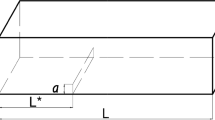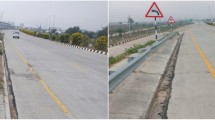Abstract
Accurate pavement performance prediction models are essential to ensure optimal allocation of resources in maintenance management. These models are developed using inventory and monitoring data regarding pavement structure, climate, traffic, and condition.
However, numerous road agencies have limited pavement data. Due to the inexistence of historical data, data collection frequency, and/or quality issues, the amount of data available for the development of performance models is reduced. As a result, the resource allocati on process is significantly undermined.
This paper proposes a transfer learning approach to develop pavement performance prediction models in limited data contexts. The proposed transfer learning approach is based on a boosting algorithm. In particular, a modified version of the popular TrAdaBoost learning algorithm was used.
To test the proposed transfer learning approach, a case study was developed using data from the Long-Term Pavement Performance (LTPP) database and from the Portuguese road administration database.
The results of this work show that it is possible to develop accurate performance prediction models in limited data contexts when a transfer learning approach is applied. All the models resulting from this approach outperformed baseline models, especially in what regards long-term forecasts. The results also showed that the transfer learning models perform consistently over different time frames, with minor performance losses from one-step to multi-step forecasts.
The findings of this study should be of interest to road agencies facing limited data contexts and aiming to develop accurate prediction models that can improve their pavement management practice.
Similar content being viewed by others
References
R. Haas, R. Hudson, L.C. Falls, Pavement asset management, John Wiley & Sons, 2015. https://doi.org/10.1002/9781119038849
S. Gowda, S. Jain, K. S. Patil, K. P. Biligiri, B. E. Prabhakar, Development of a Budget-Prioritized Pavement Management System based on Engineering Criteria, Int. J. Pavement Res. Technol. 8 (3) (2015) 206–220. https://doi.org/10.6135/ijprt.org.tw/2015.8(3).206
P. Marcelino, M. L. Antunes, E. Fortunato, Comprehensive performance indicators for road pavement condition assessment, Struct. Infrastruct. Eng. 14 (11) (2018) 1–13. https://doi.org/10.1080/15732479.2018.1446179
S. Cafiso, A. Di Graziano, D. G. Goulias, C. D'Agostino, Distress and profile data analysis for condition assessment in pavement management systems, Int. J. Pavement Res. Technol. 12 (5) (2019) 527–536. https://doi.org/10.1007/s42947-019-0063-7
T.A. Dawson, Evaluation of pavement management data and analysis of treatment effectiveness using multi-level treatment transition matrices, Michigan State University, East Lansing, Michigan, USA, 2012.
G. Y. Baladi, S. W. Haider, K. Chatti, L. Galehouse, T. A. Dawson, C. M. Dean, R. Muscott, N. Tecca, M. McClosky, Optimization of and Maximizing the Benefits from Pavement Management Data Collection, Federal Highway Administration, Washington, D.C, USA, 2009.
L.M. Pierce, G. McGovern, K.A. Zimmerman, Practical guide for quality management of pavement condition data collection, US Department of Transportation, Federal Highway Administration, Washington, D.C, USA, 2013.
R.L. Schmitt, S. Owusu-Ababio, K.D. Denn, Database Development for an HMA Pavement Performance Analysis System.No. MRUTC 07-11. Midwest Regional University Transportation Center, College of Engineering, Department of Civil and Environmental Engineering, University of Wisconsin, Madison, Wisconsin, USA, 2008.
A. Ferreira, L. Picado-Santos, Z. Wu, G. Flintsch, Selection of pavement performance models for use in the Portuguese PMS, Int. J. Pavement Eng. 12 (1) (2011) 87–97. https://doi.org/10.1080/10298436.2010.506538
L.N. Mills, N.O. Attoh-Okine, S. McNeil. Developing pavement performance models for Delaware, Transport. Res. Rec. 2304 (1) (2012) 97–103. https://doi.org/10.3141/2304-11
A. Ayed, Development of Empirical and Mechanistic Empirical performance Models at Project and Network Levels, (PhD Thesis), University of Waterloo, Canada, 2016.
P. Marcelino, M. L. Antunes, E. Fortunato, M. G. Gomes, Machine learning approach for pavement performance prediction, Int. J. Pavement Eng. (2019) 1–14. https://doi.org/10.1080/10298436.2019.1609673
S.J. Pan, Q. Yang, A survey on transfer learning. IEEE Trans. Knowl. Data Eng. 22 (10) (2009) 1345–1359. https://doi.org/10.1109/TKDE.2009.191
Q. Zou, Y. Cao, Q. Li, Q. Mao, S. Wang, CrackTree: Automatic crack detection from pavement images, Pattern Recogn. Lett. 33 (2) (2012) 227–238. https://doi.org/10.1016/j.patrec.2011.11.004
H.C. Shin, H.R. Roth, M. Gao, L. Lu, Z. Xu, I. Nogues, J. Yao, D. Mollura, R.M. Summers. Deep convolutional neural networks for computer-aided detection: CNN architectures, dataset characteristics and transfer learning, In IEEE Trans. Med. Imaging. 35 (5) (2016) 1285–1298. https://doi.org/10.1109/tmi.2016.2528162
K. Gopalakrishnan, S.K. Khaitan, A. Choudhary, A. Agrawal. Deep Convolutional Neural Networks with transfer learning for computer vision-based data-driven pavement distress detection, Construction and Building Materials 157 (2017) 322–330. https://doi.org/10.1016/j.conbuildmat.2017.09.110
K. Zhang, H.D. Cheng, B. Zhang B. Unified approach to pavement crack and sealed crack detection using preclassification based on transfer learning, J. Comput. Civil Eng. 32 (2) (2018). https://doi.org/10.1061/(asce)cp.1943-5487.0000736
B. Kim, S. Cho, Automated vision-based detection of cracks on concrete surfaces using a deep learning technique, Sensors 18 (10) (2018) 3452. https://doi.org/10.3390/s18103452
W. R. Silva, D.S. Lucena DS, Concrete cracks detection based on deep learning image classification, In Multidisciplinary Digital Publishing Institute Proceedings, 2018. https://doi.org/10.3390/icem18-05387
K. Gopalakrishnan, H. Gholami, A. Vidyadharan, A. Choudhary, A. Agrawal, Crack damage detection in unmanned aerial vehicle images of civil infrastructure using pre-trained deep learning model, Int. J. Traffic Transp. Eng. 8 (1) (2018) 1–4. https://doi.org/10.7708/ijtte.2018.8(1).01
J. Garcke, T. Vanck. Importance weighted inductive transfer learning for regression. In Joint European Conference on Machine Learning and Knowledge Discovery in Databases, Nancy, France, 2014, pp. 466–481. https://doi.org/10.1007/978-3-662-44848-9_30
R.E. Schapire, The boosting approach to machine learning: An overview. In: Denison D.D., Hansen M.H., Holmes C.C., Mallick B., Yu B. (eds) Nonlinear estimation and classification. Springer, New York, USA, 2003, pp. 149–171.
W. Dai, Q. Yang, G.R. Xue, Y. Yu, Boosting for transfer learning, In Proceedings of the 24th international conference on Machine learning, Oregon, USA, 2007, pp. 193–200. https://doi.org/10.1145/1273496.1273521
H. Drucker, Improving regressors using boosting techniques, In Proceedings of the 14th International Conference on Machine Learning, Nashville, USA, 1997, pp. 107–115.
D. Pardoe, P. Stone, Boosting for regression transfer, In Proceedings of the 27th International Conference on Machine Learning, Haifa, Israel, 2010, pp. 863–870.
Y. Freund, R. Schapire, A decision-theoretic generalization of online learning and an application to boosting. J. Comput. Syst. Sci. 55 (1997) 119–139. https://doi.org/10.1006/jcss.1997.1504
A. Blum, T. Mitchell, Combining labeled and unlabeled data with co-training, In Proceedings of the 11th Annual Conference on Computational Learning Theory, Madison, USA, 1998, pp. 92–100.
M. Belkin, P. Niyogi, V. Sindhwani, Manifold regularization: A geometric framework for learning from labeled and unlabeled examples. J. Mach. Learn. Res. 7 (Nov) (2006) 2399–434.
X. Zhu, Z. Ghahramani, Learning from labeled and unlabeled data with label propagation, Carnegie Mellon University, Pittsburgh, USA, 2002.
M.W. Sayers, S.M. Karamihas, The Little Book of Profiling, University of Michigan, Transportation Research Institute, Ann Arbor, Michigan, USA, 1998.
K. Golabi, P. Pereira, Innovative pavement management and planning system for road network of Portugal. J. Infrastructure Syst. 9 (2) (2003) 75–80. https://doi.org/10.1061/(ASCE)1076-0342(2003)9:2(75)
L. Picado-Santos, A. Ferreira, Development and implementation of a new pavement management system. In Proceedings of the 5th International Symposium on Maintenance and Rehabilitation of Pavements and Technological Control, Iowa City, USA, 2007, pp. 433–438.
L. Picado-Santos, A. Ferreira, Contributions to the development of the Portuguese road administration's pavement management system, In Proceedings of the 3rd European Pavement and Asset Management Conference 1138, Coimbra, Portugal, 2008, pp. 1–10.
A. Luz, L.G. Picado-Santos, Contribution to the quality index model in the Description of the national road network, Universidade de Lisboa, Instituto Superior Técnico, Lisbon, Portugal, 2011.
P. Marcelino, M. L. Antunes, E. Fortunato, Current international practices on pavement condition assessment, In Pavement and Asset Management: Proceedings of the World Conference on Pavement and Asset Management (WCPAM 2017), Milan, Italy, 2017.
S. Nassiri, M. H. Shafiee, A. Bayat, Development of roughness prediction models using Alberta transportation's pavement management system, Int. J. Pavement Res. Technol. 6 (6) (2013) 714–720. https://doi.org/10.6135/ijprt.org.tw/2013.6(6).714
Federal Highway Administration, National Performance Management Measures, Federal Register 80 (2), Washington, D.C, USA, 2015, pp. 326–393.
LTPP DataPave online, Long-Term Pavement Performance, (LTPP, 2018). Database. https://infopave.fhwa.dot.gov/ Accessed May 2018.
J. Osborne, Notes on the use of data transformations. Pract. Assess. Res. Eval. 8(1) (2002) 42–50.
L. Breiman, Random forests. Mach. Learn. 45 (1) (2001) 5–32. https://doi.org/10.1023/A:1010933404324
R.E. Schapire, The strength of weak learnability, Mach. Learn. 5 (2) (1990) 197–227. https://doi.org/10.1007/BF00116037
F. Pedregosa, G. Varoquaux, A. Gramfort, V. Michel, B. Thirion, O. Grisel, M. Blondel, P. Prettenhofer, R. Weiss, V. Dubourg, J. Vanderplas, Scikit-learn: Machine learning in Python, J. Mach. Learn. Res. 12 (9) (2011) 2825–2830.
R.W. Perera, S.D. Kohn, Issues in pavement smoothness, National Research Council, Transportation Research Board, Washington, D. C., USA, 2002.
N. Abdelaziz, R. El-Hakim, S. El-Badawy, H. Afify, International Roughness Index prediction model for flexible pavements. Int. J. Pavement Eng. 21 (1) (2018) 1–12. https://doi.org/10.1080/10298436.2018.1441414
G. James, D. Witten, T. Hastie, R. Tibshirani, An introduction to statistical learning, Springer, New York, USA, 2013.[dataset]
Acknowledgments
This work was supported by Fundação para a Ciência e a Tecnologia (FCT) [grant number SFRH/BD/129907/2017].
Author information
Authors and Affiliations
Corresponding author
Additional information
Peer review under responsibility of Chinese Society of Pavement Engineering.
Rights and permissions
About this article
Cite this article
Marcelino, P., de Lurdes Antunes, M., Fortunato, E. et al. Transfer learning for pavement performance prediction. Int. J. Pavement Res. Technol. 13, 154–167 (2020). https://doi.org/10.1007/s42947-019-0096-z
Received:
Revised:
Accepted:
Published:
Issue Date:
DOI: https://doi.org/10.1007/s42947-019-0096-z




